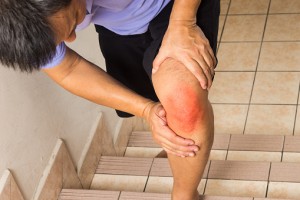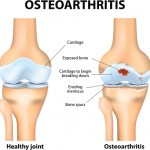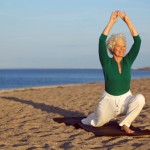

 Osteoarthritis pain related fatigue can be combated by improving sleep habits, according to research. Osteoarthritis pain can contribute to fatigue by keeping the sufferer awake at night. The result is groggy mornings and all-day fatigue, which can accumulate over many nights of restless sleep.
Osteoarthritis pain related fatigue can be combated by improving sleep habits, according to research. Osteoarthritis pain can contribute to fatigue by keeping the sufferer awake at night. The result is groggy mornings and all-day fatigue, which can accumulate over many nights of restless sleep.
It’s estimated that nearly half of osteoarthritis suffers have trouble falling or staying asleep. Rates of insomnia and daytime fatigue are much higher in those with osteoarthritis than in those who do not have the joint pain disease.
Osteoarthritis is a joint disease which affects cartilage. Cartilage is found between our bones and joints and works as a cushion. Healthy cartilage means bones can easily glide and movements are pain-free. When osteoarthritis develops movements become stiff and painful, and constant movement can lead to lingering pain. This pain is what keeps sufferers up at night.
 Osteoarthritis can occur in the body anywhere cartilage is present. Here is how osteoarthritis pain affects the different parts of the body.
Osteoarthritis can occur in the body anywhere cartilage is present. Here is how osteoarthritis pain affects the different parts of the body.
Knees
Osteoarthritis knee pain is the most common form of osteoarthritis pain. It can be commonly felt walking up and down stairs and can progress with each hour of the day. Losing weight can help alleviate osteoarthritis pain by decreasing the amount of pressure placed on the knees. To put it into perspective, just losing 10 pounds will alleviate 30 to 60 pounds of added pressure on your knees.
Hips
One-third of people with osteoarthritis will feel the pain in their hips. Stair climbing, too, can worsen hip pain, but resting can help ease it. Weight loss and not overusing the hips are two ways you can help improve hip osteoarthritis pain.
Hands
Ten percent of those with osteoarthritis will experience the pain in their hands. This type of pain often occurs in those who use their hands in repetitive motions such as writing or playing an instrument. To make using your hands hurt less use devices to assist you, such as a can opener or adding pull tabs to zippers.
Neck and spine
Common in the elderly, neck and spine osteoarthritis pain increases with movement. An affected bone can press on a nerve, causing weakness or additional pain in other areas.
Lifestyle changes are necessary in order to alleviate neck and spine pain, such as sitting properly and not overusing the joints. Medications, too, may help to ease neck and spine osteoarthritis pain.
When you’re in pain it becomes difficult to sleep. That in itself seems like the most direct reason why osteoarthritis pain can contribute to fatigue, but research has found it to be more complex than that. Insomnia and osteoarthritis have been found to coexist, not so much one leading to the other.
In a 2012 study published in Sleep, researchers uncovered two things:
But how does insomnia promote joint pain? Well, researchers believe that insomnia creates inflammation pathways that worsen osteoarthritis pain. Furthermore, poor sleep can make you more sensitive to the feeling of pain.
While being in pain and not being able to sleep is bad enough for the sufferer, it has also been shown to affect the partner sharing the bed as well. From studying the spouses of 138 osteoarthritis patients researchers found the spouses felt less refreshed in the morning. Additionally, the closer the spouses were, the worse the non-osteoarthritic spouse felt, leading researchers to believe that spouses feel more empathy.
 Clearly the solution to osteoarthritis pain is to get more sleep, but if pain is what is keeping the individual awake, then how are they expected to achieve more or better sleep? Well, believe it or not, a good night’s sleep is possible even if you have osteoarthritis pain. Here are some effective tips to improve your sleep and reduce your osteoarthritis pain.
Clearly the solution to osteoarthritis pain is to get more sleep, but if pain is what is keeping the individual awake, then how are they expected to achieve more or better sleep? Well, believe it or not, a good night’s sleep is possible even if you have osteoarthritis pain. Here are some effective tips to improve your sleep and reduce your osteoarthritis pain.
 Aside from a good night’s rest, there are other ways to experience pain relief from osteoarthritis. Here are some tips for osteoarthritis pain relief.
Aside from a good night’s rest, there are other ways to experience pain relief from osteoarthritis. Here are some tips for osteoarthritis pain relief.
Osteoarthritis is a lifelong condition, so the more you educate yourself, the more you can better live with it. Speak with your doctor if you have concerns about your osteoarthritis or want to be made aware of available treatment options.
Copyright © www.orthopaedics.win Bone Health All Rights Reserved